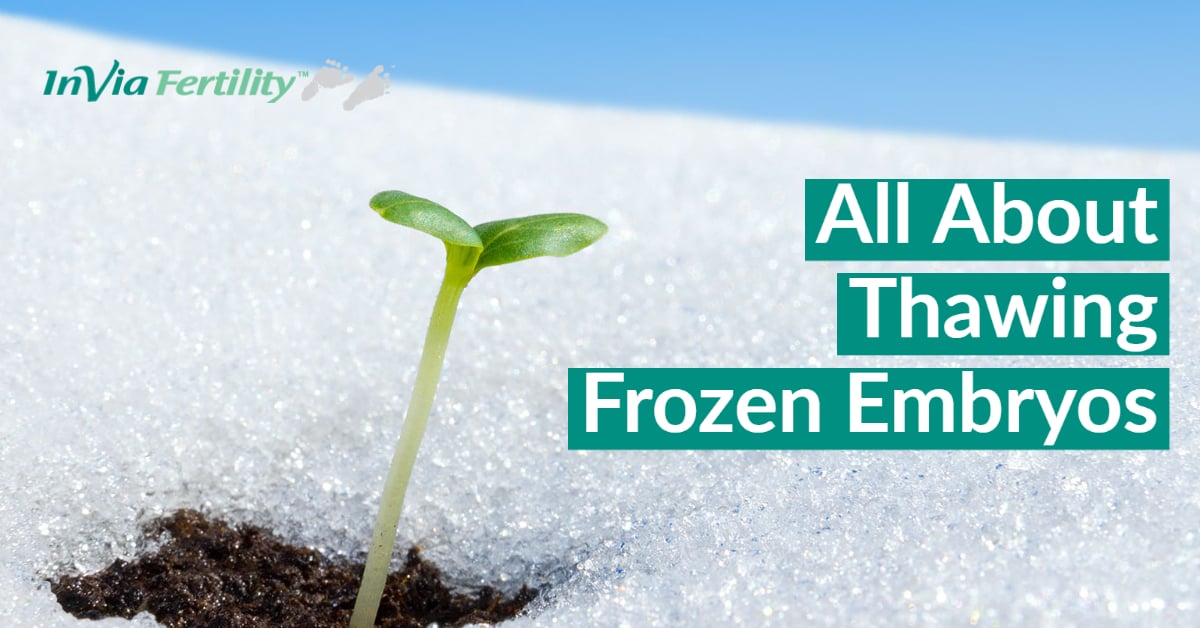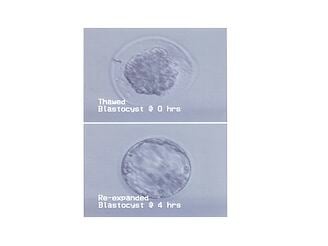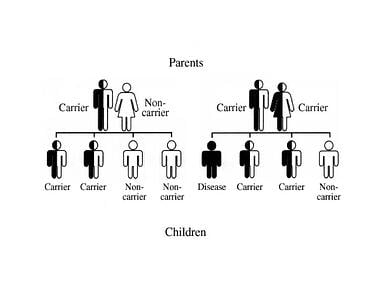We are experiencing a very high volume of calls and messages and ask for your patience. We will answer your portal messages within 48 hours.
We are experiencing a very high volume of calls and messages and ask for your patience. We will answer your portal messages within 48 hours.

 In many cases couples decide to cryopreserve their remaining embryos after an in vitro fertilization (IVF) treatment. They could freeze the embryos right after treatment before proceeding to a transfer due to concern of ovarian hyperstimulation syndrome or high progesterone. Others cryopreserve their embryos in case their first cycle is unsuccessful or for future use. Either way all the frozen embryos will have to be thawed in the same fashion for an FET cycle. With all the nerves and excitement come lots of questions about the thawing process.
In many cases couples decide to cryopreserve their remaining embryos after an in vitro fertilization (IVF) treatment. They could freeze the embryos right after treatment before proceeding to a transfer due to concern of ovarian hyperstimulation syndrome or high progesterone. Others cryopreserve their embryos in case their first cycle is unsuccessful or for future use. Either way all the frozen embryos will have to be thawed in the same fashion for an FET cycle. With all the nerves and excitement come lots of questions about the thawing process.
Typically, the frozen embryo is thawed on the day of procedure. Thawing the night before could result in the embryo developing out of sync with the lining. Everything is timed accordingly, making it extremely important that directions are followed, especially consents and the desired amount of embryos to thaw.
The best overall quality embryos are selected first and then downward. Just because one has “A” quality and the other “B” quality or one is farther expanded than the other does not necessarily mean the B or the less expanded is bad and won’t take. It is important to remember that only embryos that are likely to aid in a potential viable pregnancy will be transferred and frozen.
 There is always a chance that the embryo will not survive a thaw due to outside factors that cannot be controlled. Typically we see around a 95% survival rate. Which is comparatively high to the alternative freezing method called slow freeze with an 86% survival rate. Aside is a picture showing an embryo which has survived the thaw and fully re-expanded. Transferring the thawed embryo prior to full re-expansion gives the embryo the chance to re-expand in the natural uterine environment.
There is always a chance that the embryo will not survive a thaw due to outside factors that cannot be controlled. Typically we see around a 95% survival rate. Which is comparatively high to the alternative freezing method called slow freeze with an 86% survival rate. Aside is a picture showing an embryo which has survived the thaw and fully re-expanded. Transferring the thawed embryo prior to full re-expansion gives the embryo the chance to re-expand in the natural uterine environment.
In some incidences an embryo needs to be re-vitrified. Such cases occur when a couple signs consents for 2 embryos to be thawed and transferred and then changes their mind at the time of the transfer. In this situation, the extra embryo has to be frozen for later use. As long as the embryo to be re-vitrified survives the thaw, continues to expand, and is good quality the embryo can be vitrified. However, the same rules apply to the embryo; it may not survive the future thaw. Every case is different and every embryo is different. Typically with vitrification the system and protocol works very well and often times there are no problems with re-vitrification.
It is a procedure where a hole is made in the zona to assist the embryo to hatch out of its shell. This is done to make sure that the embryo will hatch out of its shell and is not stuck inside due to any hardening in the zona from the vitrification process. Below are pictures of embryos starting to hatch out of its shell. Once it is fully hatched the embryo is ready for implantation. Currently at Invia Fertility Specialists, we do assisted hatching on every embryo that is thawed. 
To work with a qualified, board-certified fertility specialist, make an appointment at one of InVia Fertility’s four convenient Chicagoland locations.

Entire Website © 2003 - 2020
Karande and Associates d/b/a InVia
Fertility Specialists
